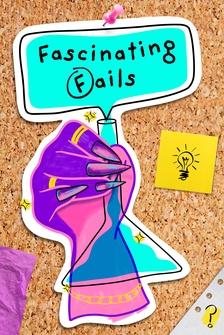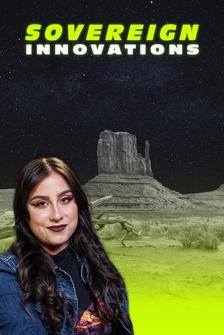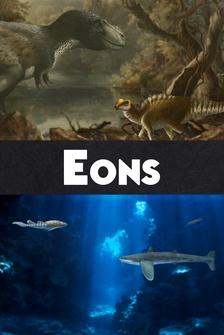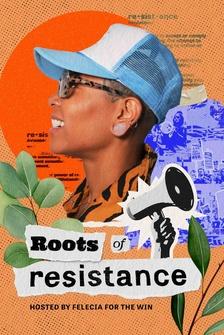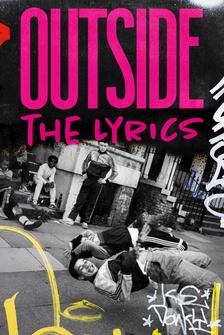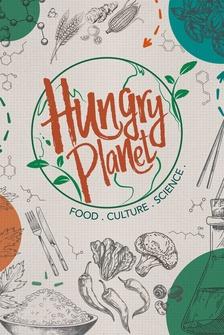Maiya: We're about to fly over California's Central Valley to get a unique perspective on climate change.
This farmland used to be home to America's largest freshwater lake west of the Mississippi.
The lake disappeared for over 100 years, and now it's back, but there's just one problem.
I have to admit, I got some butterflies in my stomach.
I'm a nervous flyer, but I'm really excited to see this lake.
Maiya: The disappearance of this lake and its sudden return represents so many of the impacts of climate change on the most important building block of life on earth: water.
I'm Maiya May, and I'm fascinated by our dynamic planet, our weather, and our climate.
What began as a career in broadcast meteorology has become a mission to figure out where we are... Woman: Oh, my god!
and where we're going as we leave this long, stable climate period and enter the hockey stick era.
In this episode, we'll explore what's causing increased extremes in precipitation and drought and how these swings are changing our food and our lives, and why agriculture needs to be a part of the solution.
So join me in the field and on the farm to see what the brightest minds and the best science have to say about what's coming and how to prepare for a wetter and drier future.
[thunder rumbling] California has always seen major climate swings that take years to decades to play out.
Drought to flood and back again.
A warming climate forces each of those swings further to the extreme, and that's exactly what the rest of the world should expect.
Daniel Swain: In a warming climate, one of the most fundamental things that happens-- the ability of the atmosphere to hold water vapor increases exponentially, about 7% per degree centigrade or 3% to 4% per degree Fahrenheit of warming.
And so I like to call this the increasing atmospheric sponge effect, because what the atmosphere does is indeed act effectively as a larger and larger kitchen sponge would.
Maiya: This means that not only is it able to soak up and retain more water, but it's also able to precipitate more.
Broadcaster: California's record rain has put one of the most important places in America for our food supply at risk, and also, it brought back a lake not seen in generations.
Maiya: Tulare Lake was once the largest freshwater lake west of the Mississippi.
It disappeared in 1890, when its tributaries were diverted for irrigation, wiping away a central part of the Tachi Yokut's way of life.
In 2023, following a decade of extreme recurring drought, suddenly, 12 back-to-back atmospheric rivers brought deadly flooding and Tulare Lake back to life.
[music] You know, that's Pa'ashi.
That's what we call it.
Maiya: How do you say it?
Yeah, Pa'ashi.
And that means?
Big water.
Big water.
Yeah.
We have creation stories about the mountains on the east side and the mountains on the west side.
Those were made from the bottom of the lake bed.
Me, you--you know, all of us people-- we were made from the bottom of the lake bed.
Kenny Barrios: Pa'ashi was essential to life for us Tachis and the Indigenous people that lived in the Central Valley.
We had elk, we had deer, we had antelope.
We used to have grizzly bears.
[music] Maiya: Now the lake bed is part of one of the most important farming regions in the world, and farming's impact on water here is huge.
The lake returns during extreme floods every few decades.
This time, it took almost a year for the water to drain.
Extreme precipitation events like the one that refilled Tulare Lake are expected to become more frequent and more intense in the future, and as the climate warms, most of the U.S. is actually expected to get wetter overall.
Daniel: This can potentially lead to more severe floods, but also more intense droughts, sometimes in the same places.
Let's call this water whiplash, and it hits food production hard.
Drought is the most significant impact and flood a close second, but that doesn't mean we'll have access to more water.
Globally, even as rainfall increases, we're running out of our most important reserve--groundwater.
[machinery humming] There's a vast network of invisible water beneath us.
It's what enabled America and many other places around the world to grow and thrive.
We were able to pull seemingly endless amounts of water from underground to feed our hungry crops and to grow our cities.
Even in the driest deserts, if you could drill a well deep enough, you could build a homestead, a farm, and even a major city.
The water is naturally stored in aquifers made of porous rock or sediment that can take tens of thousands, even millions, of years to fill.
Pump too much of this ancient water and the layers can collapse.
In particularly dry places, it's the only way farms can stay alive, but right now, we're facing a groundwater crisis.
We can't see groundwater, so I'm going to a place where farms have pumped so much of it, they've changed the face of the earth.
[music] Maiya: Oh, my gosh.
You can see all these pillars of dirt-- Oh, wow.
that are just kind of leaning in.
Essentially, this is just a crack in the Earth's surface.
That's, like, mind blowing to me.
What exactly causes these fissures?
Joe Cook: A lot of groundwater gets pumped out.
So much groundwater gets pumped out that the sediment compacts and the ground surface actually sinks.
Basically, it's like one side is sinking and the other side isn't, and you get a fissure in that zone where that changes.
Maiya: So what you're saying is the actual surface of this ground has dropped.
Brian Conway: If we were at the point where the maxims of science has been measured, that spot is now 11.5 feet lower than what it was in 1969.
There are over 170 miles of fissures in Arizona alone, and these are cracks in the earth that can quickly open and deepen, making our overdraw of groundwater visible.
Texas has pumped so much water that in some coastal areas, the land is 18 inches lower than it was in 1950, increasing the impacts of sea-level rise, especially during extreme weather.
Over the past two decades, the West has gotten drier, especially the Southwest, but even in places that are getting wetter, like Texas, Kansas, parts of the Midwest and East Coast, groundwater--our long-term storage--is drying up.
Man: If you were to look nationwide and go to the High Plains aquifer or worldwide and go to places like Pakistan or the North China Plain, there are numerous examples worldwide of aquifers that are rapidly depleting.
And one big reason for these water shortages is global warming.
So higher temperatures dry out the earth.
We now actually have a new term for this.
It's a hot drought, and what we're finding is that higher temperatures lead to greater evaporation in all its forms.
Plants are using more water, more water's evaporating from water bodies, more water's evaporating from soils, and as a result, you don't have water that runs off into your rivers and creeks.
In the drying West, the Colorado River flow decreases 9% for each additional degree Celsius of warming, and if water isn't making it to rivers and streams, it certainly isn't replenishing aquifers.
In wet years, we use surface water, but in dry years, we rely on groundwater to make up the difference.
That means water conservation is more important now than ever before.
[music] So it's easy to look at growing cities in the region and point the finger.
Cities in the Colorado Basin have grown by 24% from 2000 to 2020, but they may not be the culprit, even in a city like water-hungry Las Vegas.
We've added, since 2002, about 750,000 new residents, and we're using 26% less Colorado River water than we were two decades ago.
Water-saving technologies have grown in popularity, and cities have cracked down on excess water use.
So what sector uses the most water?
You have about 20% of the water going to municipal and industrial uses and about 80% going to agricultural uses.
Maiya: So the largest opportunity for conservation is in farming, especially with thirsty crops, like those fed to livestock, and across the U.S., farmers' wells are running dry as water levels in aquifers drop.
The temporary solution for many farms is to drill deeper wells and access more of the aquifers' water, but that causes its own problems.
Hello.
How are you?
I'm good.
I'm Maiya.
Domingo Gonzalez.
Mucho gusto.
Domingo Gonzalez.
Yes, ma'am.
So I hear you have a well that went dry.
Yes, it did.
We've been having a drought for seven-some years.
Gradually they start going down.
My well went dry in 2021.
What is the situation like now that you don't have water?
Well, right now, we have Self Help that helping us.
They bring water to us in those black tanks right there for bathing and restroom and washing clothes, but drinking water, they're bringing in bottles.
My well is only 60 feet deep.
So in that whole project of drilling the well deeper, what does that look like?
Domingo: It would cost me $45,000.
[music] Maiya: According to a 2024 UN report, over half of our global population currently experiences severe water shortages for at least part of the year, and this crisis won't be solved by a few years of flood.
Agriculture is essential to human civilization, but it is also a essential driver of greenhouse gas emissions.
Hannah Ritchie uses big data to help find solutions to the world's most pressing problems, so I asked her to help me understand the situation.
Food system as a whole contributes between 1/4 and 1/3 of the world's greenhouse gas emissions.
So around a quarter comes from land use.
Expanding farmland into grasslands or cutting down a forest to make space for the farms, that's around a quarter.
Around 60% actually comes from emissions on the farm-- applying fertilizer, for example.
And if you have livestock, the manure contributes greenhouse gas emissions, and also livestock themselves.
So cows, for example, when they burp, they emit methane, and that's a really powerful greenhouse gas.
And then the final part is what we'd call maybe supply-chain emissions, and actually, this is what people often think about when they think about food emissions.
They think about the packaging.
So they think about the energy used for food processing or they think about transporting the food, but all of those combined actually emit the smallest amount of the whole food-system emissions.
We won't be able to solve climate change without adapting and changing the way we produce food and what we eat.
In the fight against climate change, fossil fuels are quickly being switched to more renewable energy sources, but food is hard to replace, so how do we grow more food while decreasing water and emissions from agriculture?
Well, according to Hannah, two of the most effective things we can do are to use less fertilizer and use less land altogether.
This is your farm, right?
It is my farm.
So tell me how this technology is working for Jeff's farm.
So we work on digital twins, so basically building a system that simulates the growth of plants on the computer.
This huge drone over here, that helps you do that, correct?
Bruno Basso: Yeah, that's the latest piece of technology right there and-- Let's walk over and see it, yeah.
we use to spray fertilizer, basically spoon-feeding the crops.
Fertilizer is a huge source of greenhouse gas.
Bruno: Yes, it is, and so it's very important to be able to apply the fertilizer based on the plant's need, because if you use it efficiently, you leave less nitrates vulnerable to impact water quality or greenhouse gas emissions.
Trying to be the doctor on prescribing the right amount in the right place at the right time.
OK, Doctor, let's see it in action!
And this, uh-- We should step back.
OK, yeah, we should definitely step back.
[music] Computer: Takeoff.
[drone whirring loudly] ♪ Bruno: We have built a system through artificial intelligence, through modeling that is able to capture the complexity of the interaction that occur in agriculture, climate, genetics, management, and soil, and then be able to understand What if you do something else, what is the probable outcome?
Maiya: This digital twin of Jeff's farm reveals what areas need more or less fertilizer, and the drone delivers exactly that prescription and no more.
Since fertilizer is such a large part of agriculture's contribution to climate change, precision application alone can reduce greenhouse gas emissions by up to 20% while maximizing the farm's yield.
Bruno: So we're basically bringing what we call digital agriculture.
This site-specific management is precision farming at scale.
Maiya: And the efficiency of digital agriculture at a large scale unlocks one of Hannah Ritchie's most important points about land use.
Maiya: So what are we looking at here?
Bruno: Well, this is one of the biodiversity conservation areas.
Some of the areas that they were unprofitable, and they're being converted for different purposes.
There are parts of the fields, that they are always high productivity, parts of the field that they're constantly underperforming, and then there are parts of the fields that they change from one year to the next, so let's focus immediately on the low-productivity areas.
Maiya: Bruno's analysis found that the largest opportunity exists where crops are receiving too much or too little precipitation.
Here farmers are fertilizing and seeding but not producing enough crops to cover their costs.
The fertilizer and fossil fuels used to deploy them still release greenhouse gases and pollute water downstream.
So Bruno looked at data and maps and said, "Hey, Jeff, this area, you're losing money."
Losing money, and so the win-win situation is to be able to remove these areas from corn production and putting them into biodiversity conservation areas-- pollinators, native species.
Maiya: And that means making farmers in the Corn Belt more money by using less land.
So when people think about human footprint on the planet, they think about cities and roads and infrastructure, but when you add those up, they come to a few percent of the world's land, If we take the world's habitable land-- so that's the land that's not ice or desert, stuff that we could actually use or grow forests on-- farming makes up half of that land, right?
So half of the world's habitable land is used for farming.
Maiya: Bruno estimates that over the entire Corn Belt, one of the most productive agricultural areas in the world, we could remove nearly 30% of the land from production with just a small reduction in crop yield, and the Great Lakes region, where he works, is one of the few places where ground and surface water resources are stable or even rising, making it an obvious place to grow our country's crops.
But we organized our cities and our agriculture at a time when it seemed like water was endless.
Now there are actual cracks opening in the earth, making it clear that time has ended.
Still, 15% of our crops and 13% of our livestock come from the drying Colorado River Basin.
Daniel: So the Colorado Basin essentially extends all the way from the headwaters on the western slopes of the Rocky Mountains in Colorado, all the way down into Mexico.
Most of the precipitation that contributes to the water in this basin falls in the northern half of it.
The farther south you go, the deeper into the desert you get, but ironically, most of the agriculture in this region is actually in the driest and hottest parts of the lower deserts, in Arizona and southeastern California.
Because this region is getting drier in a warming climate, a lot of these agricultural endeavors are in some ways living on borrowed time and borrowed water.
[music] Bruno: It does not make sense to grow crops where there is no water available.
[music] Maiya: So much of what I've learned in this episode is actually pretty obvious.
We need to shift agriculture from dry areas to wet areas, and we need to make sure farming in wet areas is as efficient as possible.
But I can't stop thinking about the people that change would impact.
[music] Hello!
Hi there!
How are you?
Nancy, I'm good.
Maiya, voice-over: Nancy owns Caywood Farms in the southern part of the Colorado River Basin in Arizona.
During four of the last five years, she's had to leave at least some of her fields unplanted due to lack of water.
In 2021, she had to rely completely on the almost non-existent rain.
This year, she's decided to plant fields even before she knows if there will be enough water.
See, there's water in the ditch, and so this has just been watered.
It's bringing water in on a lateral, and then there's a little ditch that's bringing it right over to our farm.
Come down and then it just seeps down.
Nancy: And then--and we're just opening the gates and letting it flow.
Yeah, I know this makes you really excited.
It makes me real excited!
Maiya: Nancy grows some of the thirstiest crops in the region as feed for cattle.
It takes four acre-feet to grow cotton, seven to nine to grow alfalfa.
We're just trying to hope that we have enough water to pull us through it.
We have these challenges with our weather and climate systems.
Seems like it's just gonna continue to get worse.
And so you're gonna continue to have challenges.
I mean, how does that make you feel?
I fear the future of agriculture in Arizona.
A lot of people ask me, "Why don't you just sell out?"
We've got solar here, we've got solar there.
We're in a drought.
And it just makes sense, right?
This farm has been in our family for 94 years.
My dad warned us before he passed.
He says, "You know, you may be forced to sell someday," and I hope that I don't have to make that decision.
Maiya: Across much of the West, the transition away from farming in dry areas feels inevitable.
Nearly all of Nancy's neighbors have chosen to sell their land to solar companies, but for many people, too much water is a more urgent problem than not enough water.
Extreme precipitation is projected to get more common across most of the country, and most people will see an increase in overall precipitation as well.
Rich Pauloo: I think we're beginning to see the effects of weather whiplash on our agricultural system.
We have the flooding of Tulare Lake.
We have reservoirs that are not large enough to hold back the torrent of flood waters that comes during a wet year.
And we have unprecedented droughts in which we depend increasingly on our groundwater reservoirs.
Maiya: And you would think that despite the devastation caused by floods that they would at least help to replenish groundwater by refilling aquifers, but on its own, water seeps into the ground slower than we pump it out.
[music] Think of our current relationship with floods as avoidance.
We want to build a culvert or a bypass to send a flood around a city, and the final resting place of that flood water is the ocean.
And so what we're talking about here is a management strategy in which we embrace the flood, where we take the flood waters and we distribute the flood waters to strategic recharge locations to fill our overdrafted aquifers.
We make use of that flood water.
Maiya: This strategic distribution is key to speeding up recharge.
So I went back to the Central Valley, where Domingo's well and so many others have gone dry.
I wanted to learn more about managed groundwater recharge.
[music] Wow.
This is really pretty!
So this is the Kings River.
Oh, my goodness.
Has there actually been enough water flow off of the Kings to support groundwater recharge?
Yeah, so it's been a good water year, and that's resulted in a couple of small flood releases, and that allowed us to basically bring in water-- I think for about 40 days.
Maiya: 2023 was a great year in terms of volume.
The problem was the intensity.
The state was pummeled by heavy rain over and over, because, again, a warmer atmosphere carries more water, and when it falls, it falls harder and faster, so water officials had their work cut out for them.
As those atmospheric rivers in the very wet water year, 2023, started to occur, we really sprung into action to maximize flood diversion to reduce the flood risk, and then with a secondary benefit to maximize the recharge, to start to replenish our groundwater basins.
Maiya: That meant sending water over the levees built by previous generations, which delivered water quickly downstream.
Steven Springhorn: So we were putting temporary pumps to pump flood water off the high-flow rivers, put it out into recharge basins, let it slow down and sink in.
And it worked.
Aquifer levels rose in 2023 and in 2024 but not enough to match the drawdown, so the state is identifying and building recharge basins in the most receptive locations.
Not all subsurface aquifers are created equal.
Some are much more porous and conductive than others, so what that means is that there are some places that are ideal sites for recharge.
Maiya: California flew electromagnetic equipment mounted on a giant hoop over the state's foothills and valleys.
This technology created detailed images of the underground layers, helping to identify the best and fastest sites for aquifer recharge.
At this recharge facility, you can see we're surrounded by all of this red, which means that we are surrounded by sand and gravels here in the top 50 feet, which means this is a great recharge location.
Maiya: So this helps you really pinpoint the exact area that you want to, you know, build a system like this.
Exactly, exactly.
So finding where those sands and gravels are are really ideal places to set a groundwater recharge facility, 'cause you know in those locations, you can get water quickly back into the ground.
Maiya: And so this canal is bringing water in from where we started at the headgate.
Yeah, that's correct.
We bring it through a series of canals, and this is how we deliver water to this brand-new recharge facility.
Maiya: This area was farmed until it was bought by the state for a recharge pond.
Now it helps to both reduce the impact of flooding and store the water for future use.
Steven: Anywhere from about 500,000 to a million acres of irrigated ag land might need to come out of production to reach overall sustainable conditions in the Valley, and that's a big change.
Maiya: And that isn't the only big change we're going to have to make.
[music] Our next episode is an explosive look at how our energy transition is going.
Oh, what?
Wow.
[explosion] Oh, my god!
Man: Wow.
Maiya: Whoa!
Maiya, voice-over: And by the end of it, you'll understand how inevitable these changes really are, and we'll see exactly what the models predict about how the weather is going to be changing for you wherever you live in the United States.
[music] ♪ You can watch the rest of Weathered: Earth's Extremes on the PBS app.
All six episodes are available to stream now.
♪




